Entrepreneur Awards finalists announced


The presenters of the Great British Entrepreneur Awards have announced over 100 finalists who are competing for recognition at its Gala Final, which takes place 22 November in London.
The awards “celebrate entrepreneurs who embody a spirit of disruption, innovation, and enterprise” from multiple industries across 20 awards categories.
Nick James, Founder of the Great British Entrepreneur Awards, said: "This year we have yet again enjoyed an increase in the amount of entries for the Great British Entrepreneur Awards, and every single category is fiercely contested. There is no doubt that entrepreneurialism is alive and well in the UK despite any uncertainty over Brexit”.
Launched in 2012, the Great British Entrepreneur Awards have since received over 1800 applications, and honored over 60 individuals and companies as winners.
The Awards are produced by the publishers of Fresh Business Thinking and organisers of the Entrepreneur Wales Awards.
Awards sponsors include NatWest, Kingston Smith, Canfield School of Management, FedEx, De Broc School of Business, Exact, Carbon Law Partners, Leadership Challenges, S3 Advertising, and BMW Mini.
To see the full list and for more info, see the Great British Entrepreneur Awards.
The Shareholder Revolution?


3p Weekend: These Startups Are Out to Change the World


With a busy week behind you and the weekend within reach, there’s no shame in taking things a bit easy on Friday afternoon. With this in mind, every Friday TriplePundit will give you an easy read on a topic you care about. So, take a break from those endless email threads and spend five minutes catching up on the latest trends in sustainability and business.
Held annually in Austin, Texas, the SXSW Eco conference gathers designers, entrepreneurs and thought leaders from across the sustainability and social impact space. Adding to its impressive portfolio of speakers and special events is the annual Startup Showcase, where tomorrow's business leaders square off in a fast-paced pitch competition to make their ideas a reality.
Moving into its fifth year, the event has become a launching pad for the latest innovations set to positively impact society and the environment. Collectively, participating companies have gone on to receive over $60 million in funding, acquire global brands as clients, and partner with utilities and energy companies, according to SXSW Eco organizers.
This year's competition, emceed by TriplePundit founder Nick Aster, featured 48 finalists and a diverse collection of creative ideas that promise to make people's lives easier and more sustainable. After days of deliberation, the judges decided on a winner in each of the six categories: social impact, IOT and software, food and agriculture, water, energy, and reuse and recycling.
Read on to learn more about the winners of the contest, presented by Austin Energy and the Austin Technology Incubator. You'll likely be hearing about them in the future.
Social impact: The Tycycler
Nigeria, Kenya, Tanzania, South Africahttps://youtu.be/XsaLW0KfIYU
Africa lacks a clean and legal mechanism for recycling waste tires, but thousands still depend on tire recycling for their livelihoods. "Across Africa the practice of burning waste tires to obtain the valuable steel bead wire laced inside has become a crude, but common practice," the makers of the Tycycler wrote on their website. Independent rubbish collectors set tires ablaze, releasing carcinogenic smoke, to recover steel wires -- which they then sell to informal waste brokers.
Cleaner tire recycling technologies exist but are expensive, complex and highly mechanized. That presents a clear barrier to adoption for informal waste workers. The Tycycler is the first non-motorized waste tire recycling device. And it's helping informal workers to operate sustainably, safely and efficiently.
"Using little more than a hydraulic jack, sharp edge and raw human energy, the device can extract the steel bead wire from up to 150 waste tires per day, producing between 180 and 200 kilograms of high quality steel bead wire," the founders wrote. The company claims each device creates two new full-time jobs and sequesters 4 tons of carbon emissions per day.
IOT and software: Eko Devices
San Francisco, CaliforniaThe stethoscope has remained more or less unchanged for over a century, and electronic alternatives have proven slow to catch on. But the founders of Eko Devices are out to shake things up.
The Eko Core stethoscope allows healthcare professionals to switch between analog and digital modes with the push of a button -- providing amplification and smart device support to record and share critical sounds when they need it and classic analog performance when they don't.
The Eko Core platform also includes an app that allows healthcare professionals to stream audio wirelessly from their Eko digital stethoscope and quickly assess patients' heart, lung and body sounds in a non-invasive and effective way.
Food and agriculture: SabrTech
Nova Scotia, CanadaAlgae may very well be the next big thing in clean tech. Innovators have applied the humble organisms in everything from aquaculture and biofuels to personal care products. But algae's booming popularity leaves questions about supply. How can we produce algal biomass sustainably and in quantities large enough to meet exploding demand?
SabrTech, developer of the RiverBox, may have a solution. The RiverBox algae cultivation platform is deployable for on-site algae production anywhere in the world. It can be used as a modular unit, in a greenhouse, outdoors exposed to the sun, or in a brick-and-mortar facility.
Due to its versatility, high yield and minimal resource use, the RiverBox overcomes common challenges faced by traditional algae cultivation methods -- such as low yields, lack of scalability and significant environmental impacts associated with open systems.
“With the right partners, SabrTech will become the global leader in local everywhere algal biomass production,” President and CEO Mather Carscallen promises on the company's website.
Water: Nutrient Recovery and Upcycling
Madison, Wisconsinhttps://youtu.be/5busXiTQ49Q
Nutrient Recycling and Upcycling (NRU) is out to change the way we manage nutrients in wastewater, transforming these materials from waste to resource.
Wastewater contains nutrients that, in high concentrations, are harmful to aquatic ecosystems. But these nutrients, such as nitrogen and phosphorus, have value for agriculture and other industries. Yet we still treat them as waste in the water treatment process.
With a foundation in chemistry and soil science, NRU claims to have developed technologies that recover nutrients from wastewater. The resulting materials are ready to be used as nutrient fertilizers and industrial precursors. The process not only creates high-grade fertilizers, but also lowers operational costs for treatment plants.
"Bridging the gap from waste to resource will help protect the health and prosperity of current and future generations," the founders wrote on their website. "Our mission is to develop innovative technologies and provide services that complete the circular economy of nutrients in wastewater treatment, agriculture and industry."
Energy: Skycool Systems
San Francisco, CaliforniaThis startup, spinning out of Stanford University, is out to harness the cold of outer space to improve the efficiency of cooling and refrigeration systems.
The system is based on a natural phenomenon called radiative cooling. Here's the gist, via the MIT Technology Review: All objects emit thermal radiation. When it's emitted toward the sky, a good chunk of this radiation is absorbed and reflected by the atmosphere. But another portion escapes to the upper atmosphere and outer space, where of course it is much colder. This can cause the object emitting the radiation to cool well below the temperature of the surrounding air.
The appropriately dubbed Skycool Systems is developing rooftop panels its founders claim can cool fluids as much as 25 degrees Fahrenheit below the ambient air temperature, utilizing radiative cooling. The system can run 24 hours a day, where the only electricity requirements are to run a pump.
The company claims the technology operates with zero evaporative losses and can improve the efficiency of cooling and refrigeration systems by as much as 40 percent.
Energy: Xstream Trucking
San Francisco, Californiahttps://youtu.be/LOv3JBHdJDQ
The freight industry is valued between $700 billion and $800 billion a year, but it comes with a hefty environmental impact: While trucks represent less than 5 percent of the vehicles America's roads, they create around a quarter of all vehicle carbon emissions. The folks behind Xstream Trucking, which tied with Skycool for the energy category, are out to cut that footprint down to size and increase the profitability of truck fleets.
They identified a key area ripe for improvement: the drag created by the gap between the cab and the trailer. This gap allows truckers to make sharp turns at low speeds, but it's basically unnecessary when doing a straight shot on the highway. At 65 miles an hour, 66 percent of a truck's fuel is spent overcoming this wind drag, according to the company.
The team's solution -- the Gapgorilla -- automatically deploys when a truck hits 40 miles per hour, allowing the truck to function almost like a bullet train on the highway. The company claims its solution can reduce fuel consumption by up to 40 percent without any interaction from the driver.
Reuse and recycling: Vartega Carbon Fiber Recycling
Denver, ColoradoVartega is a recycler of advanced materials –- specifically strong and lightweight carbon fiber, used in the aerospace, automotive, wind energy and sporting goods industries. Approximately 30 percent of all carbon fiber is wasted as manufacturing scrap, totaling 15,000 metric tons per year, according to the company.
Through Vartega's patented recycling process, this expensive scrap material can be recycled into a low-cost grade of carbon fiber for use in things like aircraft interiors, automotive structures and wind turbine blades. The fiber can also be used as a 3-D printing filament -- turning yesterday's waste into the building blocks for tomorrow's technology advances.
Image credits: 1) 2) and 5) courtesy of SXSW Eco; 3) SabrTech 4) Skycool Systems
Why We Need to Hold Corporate Carbon Producers Accountable
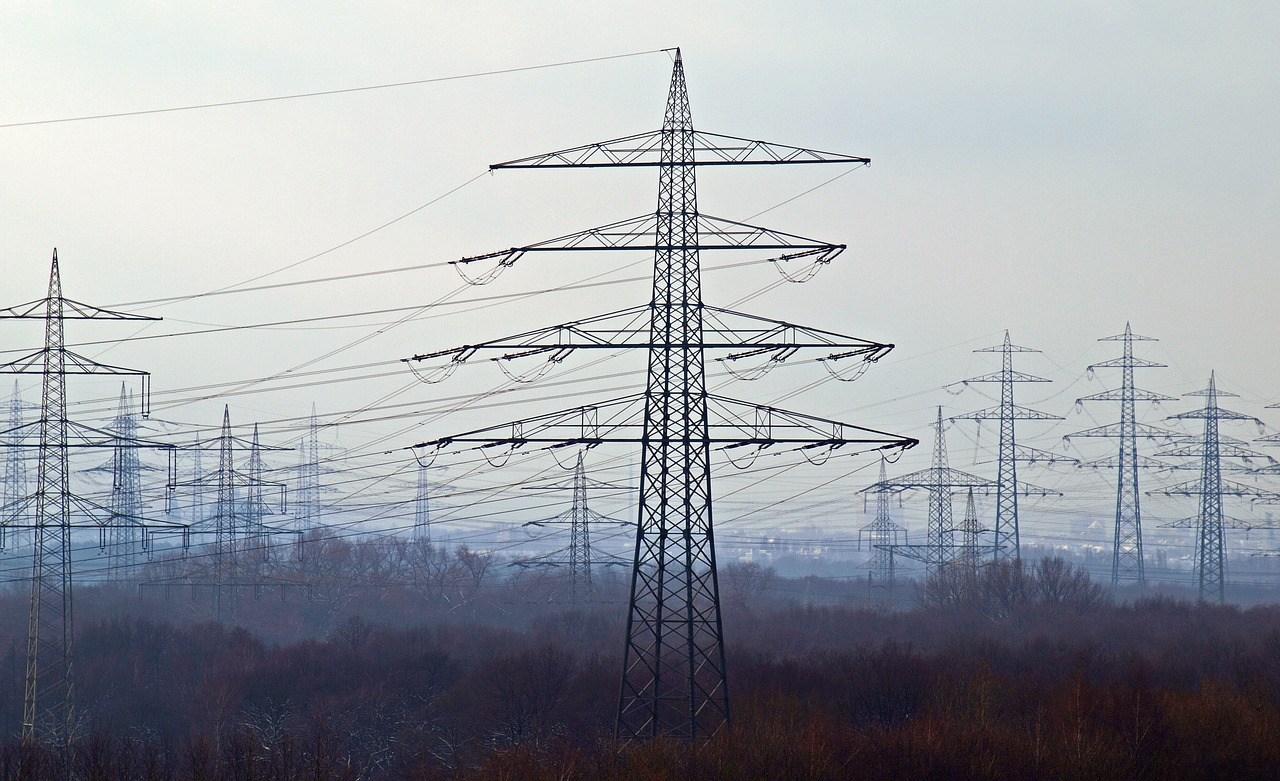

By Elliott Negin
When assessing responsibility for global warming, politicians, journalists and others tend to think in terms of nations. China, as we all know, is the world’s largest carbon emitter. The United States — the top emitter until 2006 — is No. 2, and so on. However, nations alone do not emit carbon dioxide and methane. Hydrocarbon fuels, extracted and marketed by companies, do.
Thanks to the groundbreaking work of geographer Richard Heede, we also know that a relatively small number of investor- and government-owned companies are responsible for two-thirds of human-caused carbon emissions since the beginning of the Industrial Revolution. Heede’s 2014 study found that just 90 companies accounted for 65 percent of worldwide carbon emissions between 1854 and 2013. What’s more, half of those companies’ total emissions have occurred since 1988 — long after the scientific community and the public became aware of the threat posed by global warming.
In light of Heede’s findings, what responsibility do these fossil fuel giants bear for climate change? And what role should they play now, given that the December 2015 Paris climate accord has committed nearly 200 nations to move to a low-carbon future?
The Union of Concerned Scientists (UCS) recently compiled a scorecard to help answer these questions. In its new analysis, UCS rated the business practices of the top eight U.S. investor-owned fossil fuel companies on Heede’s list that are U.S.-based or have a North American affiliate. In order of emissions magnitude, the UCS scorecard evaluated Chevron, ExxonMobil, BP, Royal Dutch Shell, ConocoPhillips, Peabody Energy, Consol Energy and Arch Coal. Together, they are responsible for nearly 15 percent of worldwide industrial carbon emissions since the 1850s and have spent tens of millions of dollars over the last two decades to deceive the public about the reality of climate change.
UCS graded the companies on a five-point scale — ranging from “advanced” to “egregious” — in four broad categories, including the accuracy of their public statements about climate science; their support for trade associations, think tanks and advocacy groups that spread disinformation about climate science and try to block government action on climate; their position on proposed government climate policies; and their willingness to disclose the risks climate change poses to their business as required by the U.S. Securities and Exchange Commission.
The overall finding? Unlike the children of Garrison Keillor’s fictional Lake Wobegon, the companies in the UCS survey are all below average.
“These companies are substantial contributors to the problem of climate change and, if we’re going to achieve swift and deep reductions in carbon emissions, they will have to take responsibility for their climate-related actions,” said Kathryn Mulvey, a senior UCS analyst and lead author of the scorecard. “We found some differences in the climate-related positions and actions among the companies but, by and large, they all have a long way to go.”
Renouncing climate disinformation
For a fossil fuel company to retain the public trust and social legitimacy to do business, step one is to make accurate public statements about climate science and renounce support for trade associations and advocacy groups that mislead the public about climate change.
How have the companies performed in these areas?
Only BP and Shell earned a passing grade for their public positions on climate science. In June 2015, BP, Shell, and four other European-based oil and gas companies sent a letter to the United Nations acknowledging that much more needs to be done “to limit the temperature rise to no more than 2 degrees [Celsius] above pre-industrial levels” and urging governments to set a price on carbon. “We want to be part of the solution,” they wrote, “and deliver energy to society sustainably for many decades to come.”
The lowest mark in this category went to ExxonMobil, which has consistently disparaged climate science and recommended that societies learn to adapt to global warming. “Mankind has this enormous capacity to deal with adversity,” ExxonMobil CEO Rex Tillerson said at the company’s 2015 annual shareholder meeting, “and those solutions will present themselves as the realities become clear.” Never mind that the realities of climate change have been clear for many years — and the company’s own scientists warned Exxon’s upper management decades ago about the “potentially catastrophic” risks posed by global warming.
UCS also ranked ExxonMobil the lowest — a designation of “egregious” — for its longtime support of climate science denier groups. The company has spent at least $33 million since 1998 on a network of more than 60 think tanks, advocacy groups and trade associations, many of which continue to distort climate science and denigrate renewable energy to this day.
Chevron, which routinely tries to block federal and state climate initiatives, joined ExxonMobil at the bottom. Both are members of the American Legislative Exchange Council (ALEC), a secretive business lobby group that denies human activity is driving climate change and provides its state legislator members with sample bills to undermine renewable energy. Over the last several years, BP, ConocoPhillips and Shell have quit ALEC. Nonetheless, they each earned poor marks for standing by while the trade groups to which they belong — including the American Petroleum Institute, National Association of Manufacturers and the U.S. Chamber of Commerce — misrepresent climate science and oppose government efforts to curb carbon emissions.
Doing business in a low-carbon world
Because the products fossil fuel companies sell in the marketplace are directly responsible for carbon emissions, these companies have a special responsibility to transform their business models to reduce that threat. Practically speaking, that means publicly acknowledging the international community’s commitment to swiftly move to a low-carbon economy and supporting policies consistent with this goal. It means taking immediate action to disclose and cut emissions from their current operations by, for example, ending the harmful practice of flaring natural gas. And ultimately it will mean transitioning to cleaner energy sources to remain relevant.
How do the companies rank on these metrics?
The companies UCS appraised have made general statements on their websites or elsewhere about the need to reduce carbon emissions, but most have stopped short of supporting specific policies. As mentioned above, BP and Shell now back carbon pricing, earning each of them a middling grade for their stated support of U.S. government action. ExxonMobil also got a middling grade in this category. The company claims to favor a revenue-neutral carbon tax, although its sincerity is questionable given the fact that the majority of senators and representatives the company funds consistently vote against the policy.
The three coal companies reviewed on the scorecard — Arch, Consol and Peabody — ranked low for continuing to support efforts to block U.S. climate action. The largest, the now-bankrupt Peabody Energy, was the worst of the lot. It received an “egregious” rating for denying there is a scientific consensus about climate change in its legal challenge to the Environmental Protection Agency’s Clean Power Plan to cut carbon emissions from coal-fired power plants.
All of the companies received poor marks on disclosing and reducing their own emissions. While more than 180 major corporations have now committed to setting science-based targets to reduce their emissions in line with last year’s international climate agreement, none of the companies UCS evaluated has yet done so. In fact, not a single fossil energy producer is among those companies.
Fossil fuel industry at the crossroads
If the companies UCS surveyed are smart, they will reinvent themselves.
History provides clear examples of success — and failure. Back in the mid-1800s, whaling — which provided oil for the lamps that lighted much of the Western world — was the fifth-largest industry in the United States. By the second half of that century, whale oil was replaced by kerosene, which in turn was rendered obsolete by the electric light. The whaling industry collapsed.
By contrast, the Fisher Brothers, who manufactured horse-drawn carriages at the turn of the 20th century, adapted to the changing times. Realizing that their future was tied to the fledgling auto industry, they redesigned their product to handle the stresses and strains of the new technology. They morphed into the fabulously successful Fisher Body Company, which eventually became a division of General Motors.
The fossil fuel industry is at a similar crossroads today, and at least two of the companies in the UCS survey — BP and Chevron — ventured into the renewable energy business a decade ago. When they did not realize quick profits, however, they sold off their holdings. Others, notably ExxonMobil, flatly reject the idea of diversifying into renewables because, as Rex Tillerson told his shareholders, “We choose not to lose money on purpose.”
Given that scientists project that energy companies worldwide will have to leave 60 to 80 percent of their reserves in the ground to ensure average temperatures do not rise more than 2 degrees Celsius, that’s shortsighted thinking at best. And, in any case, genuflecting to the quarterly earnings report stifles innovation. When Toyota first introduced the Prius, the company lost money on every one it sold. Now it dominates the hybrid market because it was willing to invest in a long-term strategy.
So what should these eight leading energy companies do? The UCS scorecard makes a number of recommendations, including ending their support for climate science disinformation; fully disclosing the risks of climate change to their operations; developing new products and technologies that do not harm the environment; and supporting sensible policies to curb carbon emissions.
“Fossil fuel companies will, in all likelihood, continue to operate for many years to come while we decarbonize the world economy,” Mulvey said. “But they can no longer be allowed to mislead the public and their shareholders about the threat their products pose to the planet. We’ve identified a series of steps these companies should take immediately, and we’re going to keep the pressure on to get them to do so.”
Image credit: Pixabay
Elliott Negin is a senior writer at the Union of Concerned Scientists.
'Super Grass' from Denmark May Reduce Emissions from Cattle


Researchers at Aarhus University in Denmark say they are close to developing a variety of grass species that are easier for cattle to digest. Should these grass seeds come to market in the next several years, scientists at the university’s Department of Molecular Biology and Genetics believe the global beef and dairy industries could take another step in mitigating their impact on climate change. In addition to creating less methane and carbon dioxide gas from cows, these grasses would be easier to digest and could actually boost milk production.
The university says it is partnering with the Dutch grass seed producer DLF to have these new grasses out to market in seven to eight years.
One of the largest factors that contribute to cattle’s impact on the environment is in their physiology. In addition to other ruminant animals such as deer, goats, sheep and camels, they have four compartments within their stomach instead of one. That largest compartment, the rumen, is where billions and billions of microorganisms allow cattle to break down the cellulose and other materials in grasses that other mammals, birds and humans cannot. This process, enteric fermentation, leads to the release of emissions -- especially potent methane gas -- when cattle “burp.” (Contrary to popular assumptions, the problem is not gases coming out of these animals’ other orifice.)
Despite the ongoing consolidation in Denmark’s agriculture sector, this small European country (which is about the size of Massachusetts and Connecticut combined) is, at last count, still home to over 1.1 million head of cattle. The result is that Denmark’s cattle emit at least 149,000 tons of methane annually. The research team at Aarhaus University says this improved grass could reduce all cattle-related greenhouse gases by a minimum of 10 percent.
And the greater the digestibility, the more milk can be produced. The Aarhus University team concluded that for each 1 percent improvement in the digestion of grass, a cow can produce an additional 250 milliliters (8.5 fluid ounces) of milk. Furthermore, this research suggests that each percentage-point improvement in total grass digestion also leads to a 1.5 percent reduction in methane emissions per head of cattle. To put this in broader numbers, a 10 percent improvement in grass digestion means cattle in the European Union would emit 1 million fewer tons of carbon dioxide annually.
Reducing emissions from cattle remains the holy grail for agricultural researchers as the world seeks a way to feed 9 billion people by 2050 without exhausting, or expanding upon, what little land is already available for farming and pastureland. Recently scientists suggested supplements in powdered form, with ingredients such as nitrates, could also improve digestion and overall food production from cattle while reducing greenhouse gas emissions.
Such an advancement would not only improve the environmental performance of established cattle producers such as the U.S., Canada, the E.U. and Australia, but also within countries that have seen in increase in beef and dairy production in recent years.
Other top 10 cattle producers in the world, such as Brazil, China, India and Mexico, are not nearly as competitive as their Western counterparts. As discussed during a recent conference hosted by the Global Roundtable on Sustainable Beef, the grasses fed to cattle in developing countries tend to have more cellulose and are of an overall lower quality. An improvement in how cattle are fed in these emerging markets would not only improve dairy and beef production, but would also help reduce emissions and the amount of land needed to raise these animals in a more affluent, and hungry, world.
Image credit: Malene Thyssen/Wiki Commons
Early Warning Systems Reveal Child Labor in Bangladesh’s Garment Industry
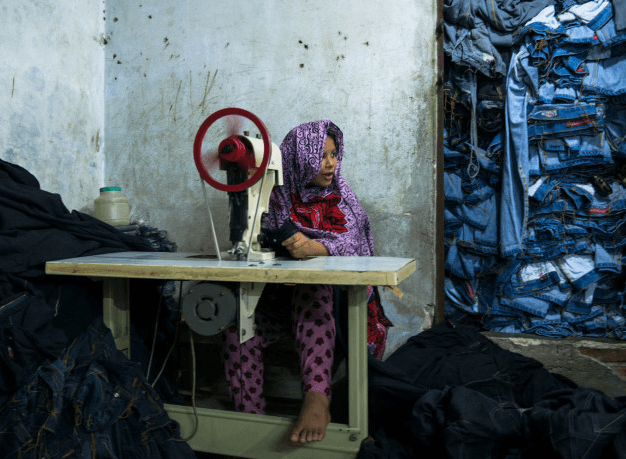

Since the Rana Plaza factory collapse in 2013, apparel companies have scrambled to ensure their supply chains can become more responsible and free of labor and human rights abuses. While some progress has arguably been made, much work needs to be done if the fashion industry can genuinely say it is concerned about human rights.
This is particularly true when it comes to child labor. Two mobile telephone systems, Laborlink and LaborVoices, address the problem. The systems allow workers to anonymously report signs of human trafficking, delayed wages and child labor. Garment workers simply call and reply to simple questions by pressing 1 for “yes” and 2 for “no” on a mobile device.
Based on data recently released by LaborVoices, “1” has been pressed frequently enough to warn several of the world’s leading apparel brands that the clothes they source in Bangladesh have ties to child labor.
LaborVoices’ data, which is collected by a platform called Symphony, covers worker reports from January to June of this year. So far, the information LaborVoice gathered includes about 85 factories in the system’s database, or approximately 3 percent of Bangladesh’s garment exports. That data is now the foundation of a heat map that pinpoints which factories score moderate, elevated or even high risks for use of child labor. Most of the factories are located around the country’s capital and largest garment-producing region, Dhaka, as well as Chittagong, a city of 2.5 million in Bangladesh’s southeast.
LaborVoices' data reveals that over 5,200 workers dialed into the system to date, reporting at least 500 incidents of child labor. The brands that could be affected by such abuses in their supply chains include Walmart, Target, C&A, Zara, Columbia, Nike, Adidas, H&M, Levi’s, Louis Vuitton and Tesco.
The advantages of these systems is that they provide real-time information that is much faster than third-party audits, which the garment industry touts as a way to monitor their operations in Bangladesh. This data also helps Bangladesh garment workers locate factories that have a better reputation for working conditions and prompt payment in contrast to their current employers. Furthermore, LaborVoices and Laborlink provide valuable data for apparel companies as they seek to allay their stakeholders’ fears about clothes coming from factories with dubious human rights records.
More data will be released in the next few weeks, one of LaborVoices' team members (who wished to remain unnamed) told TriplePundit in an email. A larger sample size should help workers, and companies, identify which factories are more respectful of workers and which ones should be avoided. LaborVoices' goal is to cover 10 percent of Bangladesh’s garment factories by 2016, with updated data released to the public every six months.
LaborVoices recently launched a similar tool in Turkey, which has emerged as another global center for garment manufacturing as its garment exports approach $20 billion annually. Bangladesh’s garment sector is worth at least $24 billion, and according to the Economist, the country seeks to quadruple that value over the next two decades. Those figures alone should serve notice to the world’s clothing brands that they need to pay close attention to systems such as LaborVoices or Laborlink if they want to ensure their supply chains indeed have the integrity many of them are quick to claim.
It is true that attitudes toward child labor vary by country, as the controversy over soccer balls made in Pakistan two decades ago revealed. But LaborVoices told TriplePundit that all of these reports of child labor occurred in Bangladeshi factories, not in homes. Considering the billions of dollars fashion brands score by sourcing from a country where the average worker does not even earn $100 a month, this is not just a wake-up call for companies to mitigate their risks. They also need to invest in training, social enterprise programs and education programs for these workers, who are the drivers behind an industry that is still rapidly growing and is immensely profitable.
Image credit: Claudio Montesano Casillas for Fashion Revolution
Hurricane Matthew Threatens Carolina Pork Industry
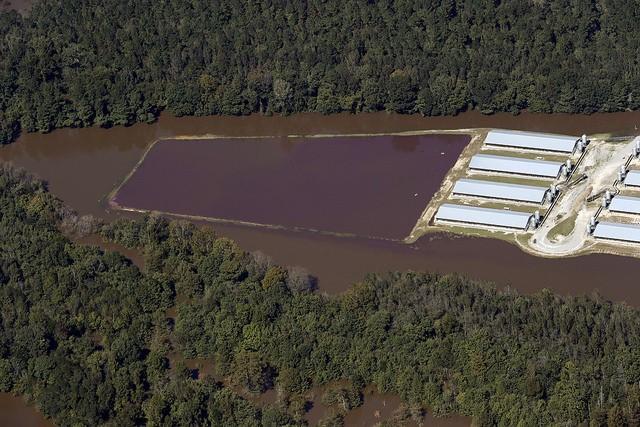

Hurricane Matthew may have passed, but damage from flooding will leave a tragic and frustrating wake for millions of residents. At least 20 North Carolinians have died, and damage across the southeastern U.S. could cost more than $10 billion. One industry that is suffering, as well as posing a lasting environmental crisis, is the state’s pork industry.
North Carolina is home to two counties that boast the nation’s largest annual pork sales, and the industry’s near $3 billion in annual revenues is only second to Iowa. Most of the industry is concentrated in the eastern part of the state, where thousands of hog farmers are now working 24/7 to protect their properties and livelihoods. But in addition to the lost revenues and lost jobs due to widespread plant closures, Hurricane Matthew also caused thousands of hogs and pigs to drown while animal waste further polluted the state’s rivers and streams. Some of North Carolina’s larger meatpacking companies, such as Smithfield, temporarily shut down their operations as Matthew approached. Smaller pork producers, meanwhile, were left scrambling.
According to one environmental group, the Waterkeeper Alliance, Hurricane Matthew will leave a lasting impact and flooding will fester across North Carolina for some time. In addition to the threats from flooded coal ash ponds and poultry farms, overwhelmed wastewater lagoons that were built to safeguard pig excrement could send these contaminants into groundwater supplies and rivers in the event local rivers crest.
The result could be one of North Carolina’s worst economic and environmental crises since 1999, when floods from Hurricane Floyd overwhelmed lagoons that hold animal waste. Waste from farm animals such as hogs and pigs are stored in these lagoons, which are not much more than unlined pits dug into the ground, for long periods of time, environmental reporter Natasha Geiling wrote on ThinkProgress.
Add the fact that the low-lying eastern Carolinas are always subject to flood risks, plus years of lax regulation intended to boost the state’s booming livestock industry, and a 500-year event such as Hurricane Matthew can wreak havoc in a short amount of time. And nutrients that spill over from these animal waste lagoons could lead to algae blooms within the state’s rivers, lakes and even coastline well into the future.
Most unsettling are the various media accounts describing the thousands of pigs and chickens that drowned in barns and livestock operations across North Carolina. While it will take days to see if this hurricane will cause as much misery as Hurricane Floyd did in 1999, the lessons from North Carolina are still clear: Improved waste management will not only reduce environmental damage in the event of a natural disaster, but it can also save money and jobs in the long run.
Image credit: Waterkeeper Alliance/Flickr
Ripple, a New Kind of Plant-Based Milk
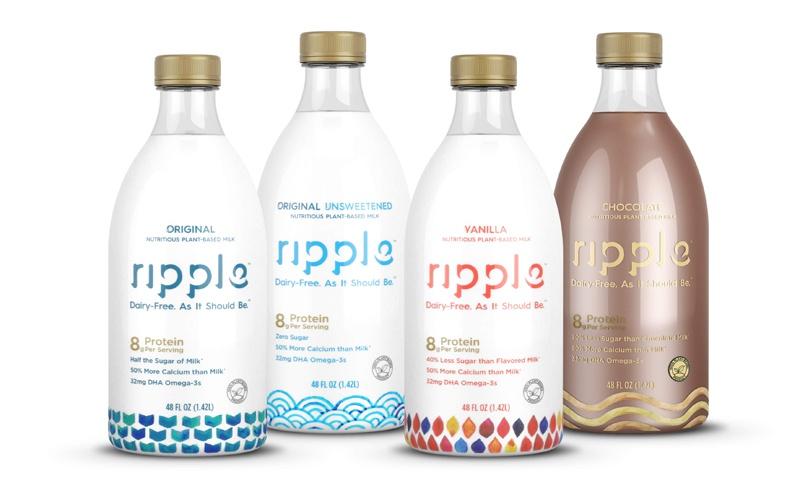

If you’ve ever walked into the alternative milk aisle at your grocery store, you might know the feeling of overwhelming choices. If you look closer at the labels, it is hard to find varieties without an abundance of added sugars that still have the protein levels comparable to an animal-derived milk.
At the 2016 SXSW Eco conference, we learned about a new brand, Ripple Foods, which was created in hopes of disrupting these norms. Adam Lowry, co-founder of Method, and Dr. Neil Renninger, co-founder of Amyris, teamed up to find a way to alleviate the intense impacts of dairy farming. The dairy industry contributes 23 percent of the total carbon footprint of all food products, surpassing both meat and eggs.
After selling Method, Lowry focused on the dilemma that we need to produce more food in the next 50 years than we have in the previous 10,000.
This daunting reality set Lowry and Renninger on the plant-based milk path. They wanted to create a more innovative product than a simple nut milk, like the popular almond which is highly water-intensive. And they wanted their product to far exceed the nutritional value of dairy milk and be a creamier, more palatable substitute to existing alternative milks.
“We looked at the top five reasons people go dairy-free,” Lowry said this week in Austin, Texas. “The last of those is because they have to, and the top four are because they want to.”
“The hardest part is the protein,” Dr. Renninger explained. Many plant-based milks that are high in protein taste just like their sources, like soy or peas. “We developed technology that cleans up plant protein sources so that they don’t taste this way.”
The company claims its milk requires 93 percent less water than dairy milk, as well as a significant reduction in greenhouse gases. The milk's main protein source, yellow peas, requires 85 percent less water to grow than almonds, according to the company. Ripple’s bottles are also made from 100 percent post-consumer recycled plastic; and that plastic can be recycled by 99 percent of U.S. households.
The duo named the product Ripple to represent all of the small actions and choices we make every day, and how they can add up and create a ripple effect for more conscious and sustainable living.
Now that it has four milk flavors on the market, the company's goal is to create even more healthy, plant-based food products under the Ripple Foods brand.
Image courtesy of Ripple (press use only)
The Next CSR Challenge: Engaging in a Dialogue About Artificial Intelligence
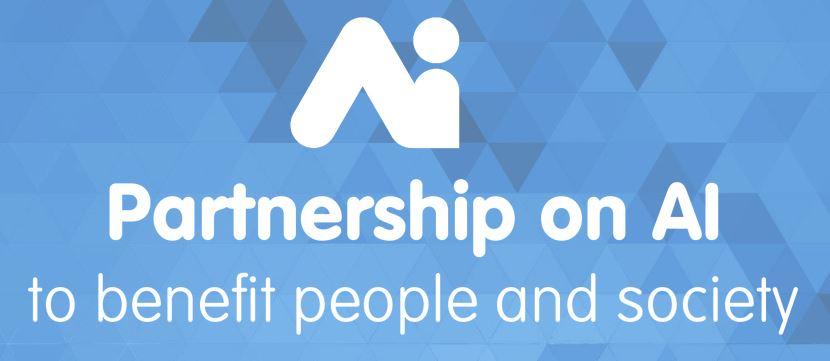

Products using artificial intelligence (AI) are creeping into our lives: in the home, online, at work, in the marketplace, in the doctor’s office. What if AI gets carried away, if it hasn't already?
Plenty of movies and books contemplate this. While those scenarios may be easy to dismiss, the consequences of what could happen are not. Unless it’s fully grasped for its benefits, companies that use AI are putting their brands at risk if society doesn’t adequately understand how it benefits from the technology.
That’s my principal take-away from reading a relatively new book – "Connect, How Companies Succeed by Engaging Radically with Society." I also spoke with two of its authors, former BP Chairman Lord John Browne and technology entrepreneur Tommy Stadlen. McKinsey & Co. partner Robin Nuttall also helped write the book.
At the risk of over-simplification, the opportunities and challenges for businesses and governments deploying AI can be boiled down to one question: Do consumers trust how it’s being deployed?
The answer to that question, Browne, Nuttall and Stadlen opine, will either propel AI forward or turn back the clock.
In "Connect," you’ll be reminded of German philosopher Georg Hegel, who said what "history teaches us is that people and governments have never learned anything from history.” Are the developers of AI listening?
So, as it defines the future, will technology companies (and who isn’t one these days) learn from the past? Will the new Google Home, Tesla’s driverless cars, Apple’s latest iPhone, GE’s new industrial machines, IBM’s Watson and Amazon’s Echo – to name just a few – continue building trust? Or could one or a series of missteps disrupt the rush to deploy and make money using AI?
While that question may never be answered, it will be “the hot button issue,” at least for the next five years, Stadlen asserts. CBS’ 60 Minutes illuminated the same last Sunday.
“There is a real fear of the leverage to do harm that technology represents,” Stadlen said. “People are wary of what big business will do with technology that is incredibly complex and unknown to consumers and regulators.”
With all the advances digital applications are making, Stadlen said, it needs to do a much better job of explaining AI’s benefits to society. And to do that, corporate leaders must engage their stakeholders in radical ways that only a handful of companies have even contemplated, much less carried off successfully.
Perhaps the biggest exposure to AI is the looming prospect of robots taking over a significantly new array of manual jobs. McKinsey researchers say they found 40 percent of today’s labor activities can be automated with currently available technologies. If that plays out, there are significant implications for businesses, elected officials and everyone who tries to influence them, Stadlen said.
Until now, society has seen the creation of enough new jobs to more than replace the jobs being eliminated by industries on the decline. But the halo Stadlen said hovers over many technology breakthroughs could vanish quickly unless the Silicon Valley culture enables an accessible platform, or forum, to guide civil society through the AI pitfalls that loom.
The best way to approach such a far-reaching endeavor, Stadlen said, is to create an independent advisory panel with real powers. “I would put on that panel representatives of government, unions, civil society, NGOs – a real cross-section of key stakeholders. I would arm them with all the information they need and make their work authoritative.”
Information is critical, Stadlen said, because it’s the imbalance of information that complicates, if not blocks, useful dialogues that can bridge gaps between experts and the public. The authors call for “radical openness” in the sharing of information.
“Business takes advantage of that to society’s detriment,” Stadlen says. In response, governments “slam down” burdensome regulations that turn out to be bad for business and undercut what it can do for society and the money it can make. “We need to avoid that with artificial intelligence.”
A good example in their book of an industry constantly under the microscope but that also helps power the world are oil and gas producers. Browne recounts a useful example of radical openness when he led BP to produce natural gas in 2002 from the “supergiant” Tangguh field in Bintuni Bay, off the Bird’s Head Peninsula of Papua, Indonesia.
Perhaps some companies deploying AI see the value of formally engaging with civil society. On Sept. 28, executives at Microsoft and the DeepMind unit at Google, along with founding support from Amazon, Facebook and IBM, launched the Partnership on AI nonprofit.
The partnership’s stated goals are to “study and formulate best practices on A.I. technologies, to advance the public’s understanding of AI, and to serve as an open platform for discussion and engagement about AI and its influences on people and society.”
The partnership was met by the technology trade press with some skepticism. Microsoft’s Eric Horvitz, who co-chairs the partnership with DeepMind co-founder Mustafa Suleyman, told a press briefing that recent hype concerning AI’s threats and a resulting “echo chamber of anxiety” is among the dynamics that pushed the companies to collaborate.
Horvitz and Suleyman invite any tech company, research group and non-profit to join the partnership, the Verge reported. They say “leadership will be shared equally” among the founding corporations and non-corporate participants.
The way Browne, Nuttall and Stadlen see it, the partnership should specify quickly how inclusive it will be and the genuine authority and real powers it will have.
“This is an excellent step in the right direction,” Stadlen said. “Technology companies have to earn the moral license to operate when it comes to complex and ethically-charged domains such as AI. It's on industry to persuade society that AI will benefit ordinary people, and is safe in the hands of companies.”
“To build credibility and trust,” he continued, “you have to give independent voices real authority and genuine independence.” He called on the Partnership to “publish what the academic and civil society experts say and follow their recommendations.”
Guilt-Free Fashion and Coffee with the CEO and Founder of MUD Jeans
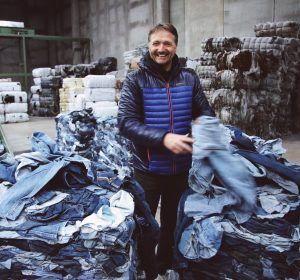

By Geoff Ledford
How do you challenge entrenched patterns of consumption and disposal while growing a fashion business at the same time? Join thinkPARALLAX for a conversation with the founder of MUD Jeans, the upstart Dutch “circular denim” brand that is tearing down the idea that sustainability or the circular economy can’t be fashionable.
thinkPARALLAX Chief Strategy and Creative Guusje Bendeler sits down with Bert Van Son, CEO and founder of MUD Jeans, in the streets of Amsterdam to talk about MUD’s disruptive “lease a jeans” business model, the challenges of taking an eco-conscious lifestyle brand mainstream, what he’s learned in MUD’s first four years, and what he hopes the future holds for the fashion industry.
Each episode of thinkPARALLAX’s Think & Drink features an informal conversation with a brand that is using sustainability to transform their industry and the world around them. Join us as we discuss successes, failures, and the lessons they’ve learned while pushing boundaries with sustainability.
https://vimeo.com/183011189
Geoff Ledford is a Creative Strategist at thinkPARALLAX – a strategic creative communications agency with a passion for building brands with purpose. We work at the intersection of business strategy, sustainability, and communication. Our values stem from the belief that profit and sustainability are not mutually exclusive – good business means doing the right thing. We cultivate knowledge, spread awareness, and create purposeful connections with audiences.